Mark Havens' Out of Season photographs show Jersey Shore motels "frozen in time"
Photo essay: Philadelphia-based photographer Mark Havens has captured the Modernist architecture and neon signage of motels in a New Jersey resort town, just before many were lost to condominium development (+ slideshow).
Havens – a professor at Philadelphia University – spent his summers in the coastal resort of Wildwood, which contains the "highest concentration of Mid-century Modern commercial architecture in America".
The town's 1950s and 1960s motels are only used three months out of the year, so have remained largely unchanged for four decades.
But noticing that they were starting to disappear to make way for giant condominiums, Havens felt the need to document the "architectural treasures" before time ran out. He explains his motivation, process and urgency to ensure their legacy in this essay written exclusively for Dezeen.
A wider selection of the images are collated into a book titled Out of Season: The Vanishing Architecture of the Wildwoods, published by Booth-Clibborn Editions and available now.
For as long as I can remember, Wildwood has meant summertime to me. So many of my summers played out against the backdrop of the island's unique motels that the buildings seemed as unchangeable as mountains. But several years ago, amid a rush of condominium development, these noted cultural and architectural treasures began to disappear at an almost unbelievable rate.
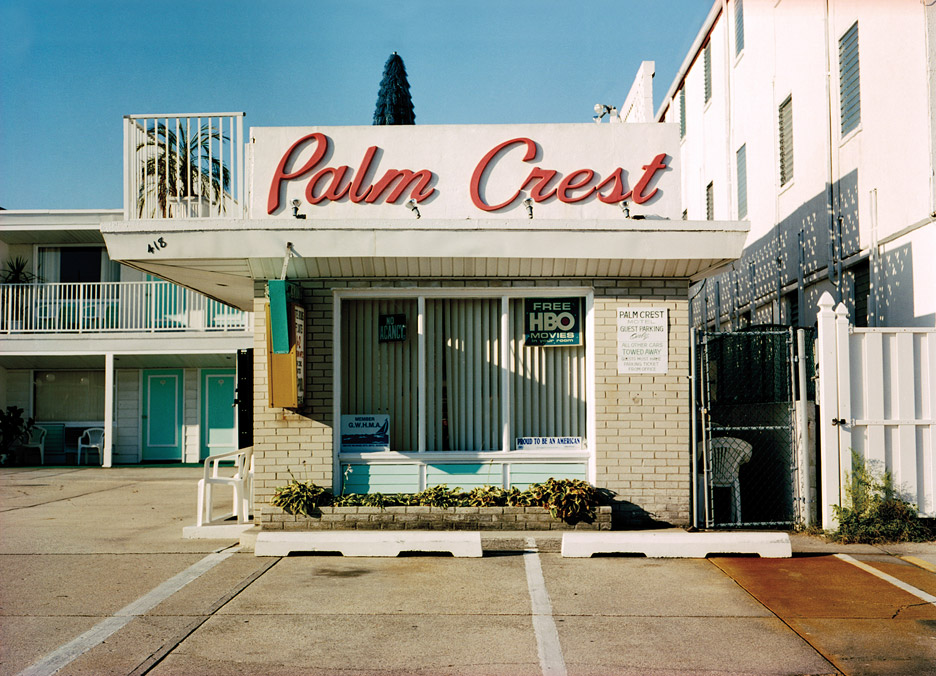
So I set out to create a visual record of the motels before they were demolished or substantially changed. As motel after motel fell, I unexpectedly realised that a part of myself was being destroyed as well. These photographs are not only about the loss of important buildings, but also the personal loss of a place and time that has disappeared.
Wildwood is a small barrier island just off the coast of southern New Jersey. The drive from Philadelphia takes two hours through city streets to suburbs that gradually give way to farmland, sandy pine forest and salt marsh. It's a blue collar vacation town that boasts a seaside boardwalk of pizza joints and roller coasters, and a now-haggard strip of nightclubs that 50 years ago played host to the likes of Chubby Checker and Bill Haley.
Through an unlikely combination of economics, geography and chance, this tiny wind-blown beach town contained the highest concentration of Mid-century Modern commercial architecture in America. A short three-month tourist season combined with a working-class reputation (in contrast to more affluent neighbouring towns along the coast) resulted in Wildwood's motels remaining virtually unchanged – frozen in time – for over 40 years.
The motels of Wildwood were built in the late 1950s and early 1960s, anticipating the arrival of the Garden State Parkway, a four-lane toll road that would ultimately run the length of the state. Borrowing heavily from the Modernist style of 1950s Florida, Wildwood's motels were like nothing else along the Jersey Shore.
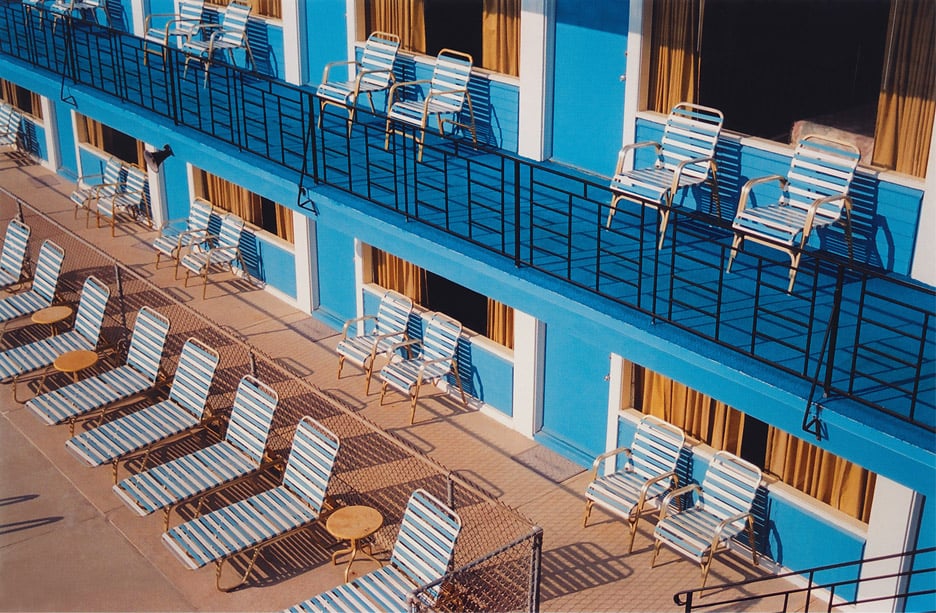
Buildings enveloped in cake icing stucco walked high on I-beam stilts of pink and aqua. Walls and roofs tilted bizarrely as if frozen in mid-collapse. Walkways and arches spiralled upward in strange concrete ribbons and plastic palm trees sprouted from zigzag verandas. The builders made sure to imbue their creations with the culture of the moment: space travel, cars, nascent rock 'n' roll and exotic Polynesian locales. Above this riot of concrete and steel bristled a forest of neon signs spelling out names like Satellite, Astronaut, Bel Air, Kona Kai, and Waikiki.
Developers, driven by skyrocketing property prices elsewhere along the eastern seaboard, arrived en masse at the end of the 1990s. Motel owners accustomed to decades of simply scraping by suddenly found themselves offered million-dollar jackpots for the sand their motels sat on.
Once sold, demolition often came swiftly. As of this writing, a significant number of the island's Mid-Century motels have been demolished – replaced by block after block of hastily erected condominiums. Many motels that remain face an uncertain future.
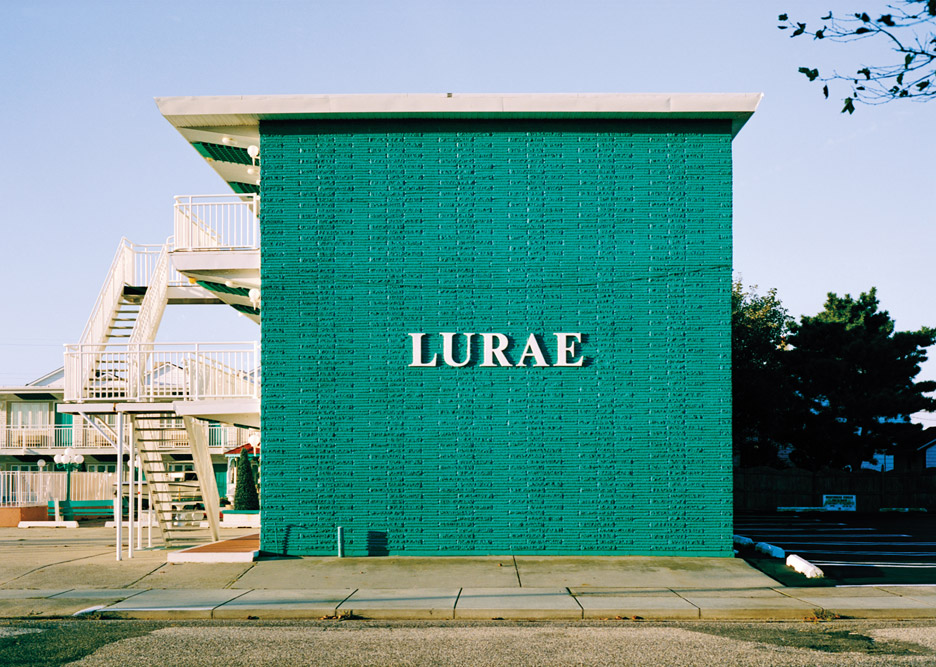
I began to photograph the motels only very reluctantly. At the start of the project I wasn't making art, I had no experience with photography and I wasn't interested in learning. So I paid a professional photographer to come down to Wildwood with me to shoot the motels that I pointed at. The results were fine, but there was just something about them wasn't getting what I was after.
So after exhausting every other possibility, I grudgingly purchased a secondhand 35-millimetre camera from a store called Happy Photo and started – very tentatively – taking photographs. As soon as I began though, it was like someone flipped a switch. I'd suddenly found a medium with this wondrous immediacy to it that I'd never known before. It was exhilarating. The photographs I was making were terrible, but I'd found a medium that I could create with.
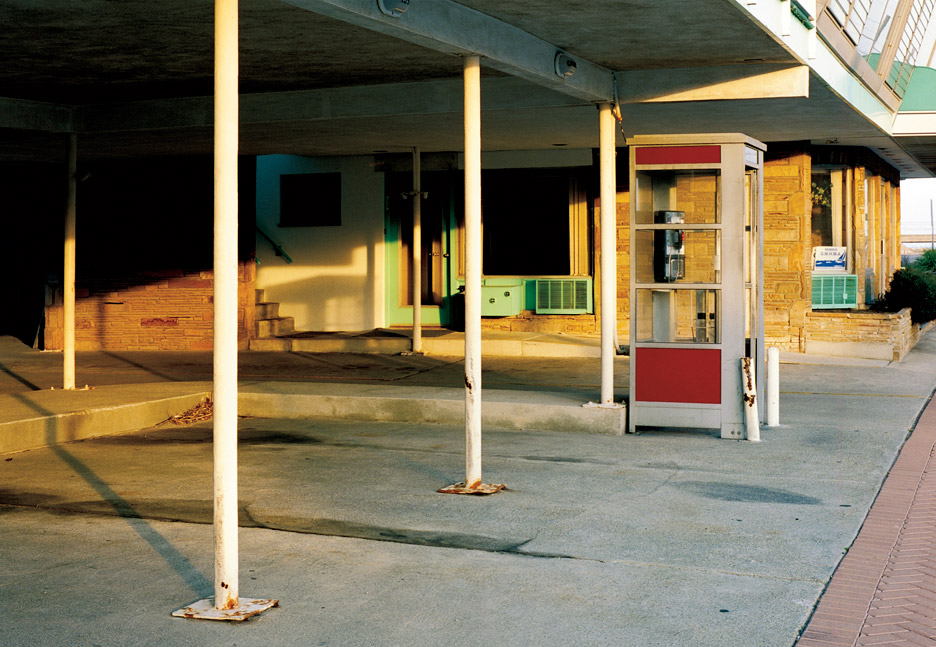
The demolitions were much more frequent when I began. Each time I would take a trip to the town it seemed like I was greeted with new dirt lots where motels had been just a few days before. It was a difficult circumstance to try and learn in — a little like trying to figure out how to be a doctor by working in an emergency room. There was just no room for error. If I got it wrong (which I did quite a lot), there was very little chance I'd get to try again. The motels were disappearing that fast.
I remember a number of occasions during that time when I'd photograph a motel but get some part of the process wrong and not get any usable images. I'd return to try again only to find that the motel had been demolished. For a time, it seemed like the more I shot, the faster the motels seemed to fall.
Eventually though, I began to learn. And just as importantly, I began to quantify what exactly it was that I was trying to capture. The deserted nature of the photographs (which turned into a primary component of the artistic statement that I was trying to make with the project) actually started as a practical measure. I began by photographing several motels during the tourist season, but I soon realised that even a single car parked in front of a motel obscured a huge amount of what I wanted to show.
I then tried photographing deep into the off-season, but then the motels were fully closed-up and dark, almost featureless. I eventually figured out that there were only two very small windows when it was possible to make the images that I envisioned: just prior to the beginning of the tourist season (at the beginning of May) and just after it concluded (at end of September). Only then were the lights on, the pools full, the chairs and plastic palm trees out, yet no one was around.
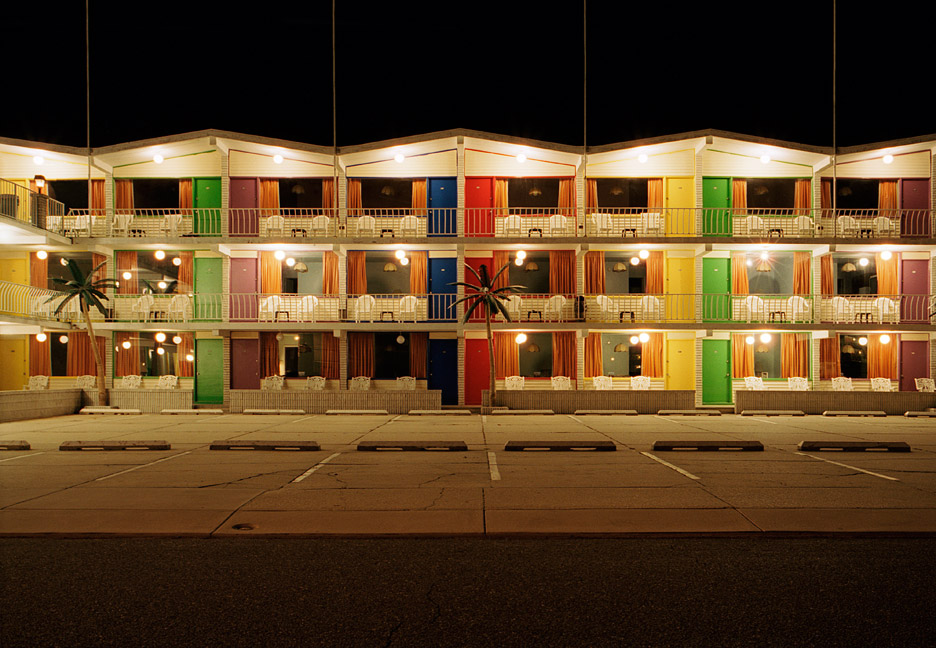
Once I began to shoot photographs that were devoid of people or activity of any kind, I realised that the isolation actually clarified the bold architectural forms and, more importantly, served as an analogue of the larger situation. Many of these buildings were empty not simply because the summer is over but because the culture, for better or worse, has moved on.
I realised that what I was actually trying to do was to bring out the interplay of an idealised past and its inexorable disappearance. People actually do inhabit these images but only by inference and allusion, and in many ways, it's this physical absence from which the work draws its strength. Impressions are made at a more elemental depth, below explicit communication, echoing that most universal of all human experiences: the inexorable passage of time and what's left behind in its wake.